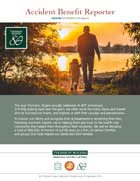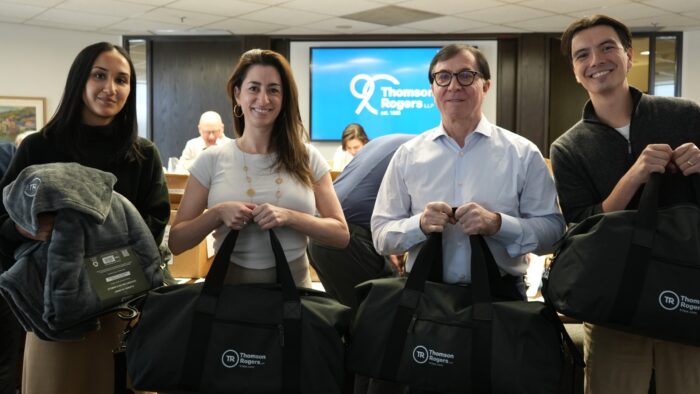Cases Highlight Need to Break Down Statutory Accident Benefits
Author(s): Leonard H. Kunka, Carr Hatch
December 5, 2016

Two recent decisions by the Ontario Divisional Court and the Court of Appeal for Ontario provide a sobering reminder of the necessity of providing clear and unequivocal breakdowns of the amounts received for Statutory Accident Benefits (SABS), including any lump sum settlements.
A similar clear set of jury questions which separates each head of damage into past and also future losses in the tort claim must be provided to allow a judge to reduce the trial award by the corresponding statutory accident benefits, on a benefit-by-benefit basis, pursuant to s. 267.8 of the Insurance Act.
In the Divisional Court decision of Mikolic v. Tanguay 2016 ONSC 71, the plaintiff settled their SABS claim prior to the trial in the tort action for an all-inclusive amount of $175,000, with the settlement disclosure notice attributing $77,500 for past and future income replacement benefits and $37,500 for past and future medical benefits.
At the trial in the tort action, the jury awarded $20,000 for past loss of income, $30,000 for future loss of income and $15,000 for future care.
Justice Harrison Arrell ruled that he could not determine the amounts received in the SABS settlement for future income replacement benefits because past and future income replacement benefits were combined in the settlement disclosure notice. As a result, Justice Arrell declined to deduct the $77,500 SABS settlement from the tort jury award of $20,000 for past loss of income or $30,000 for future loss of income.
The Divisional Court in Mikolic overturned the trial decision and found that Justice Arrell should have deducted the combined total amount received for income replacement benefits from the past and future
income loss tort awards. The Divisional Court applied the same reasoning in deducting the jury’s award for future care because the SABS settlement for “past and future medical benefits” exceeded the jury
award for future care.
Using similar reasoning as Mikolic, the decision from the Court of Appeal for Ontario in Basandra v. Sforza 2016 ONCA 251, upheld Superior Court Justice Wendy Matheson’s deduction of the total SABS received by a plaintiff from the jury awards. The main reason was that the jury questions were lumped together at trial and did not adequately separate the heads of damages to allow Justice Matheson to perform an apples-to-apples deduction.
Because the jury questions combined the heads of attendant care, medical/rehabilitation expenses and housekeeping into one category, Justice Matheson was unable to apply the s. 267.8 reductions on a benefit-by-benefit basis. Consequently, the Court of Appeal, like Justice Matheson, looked at the total amount received by the plaintiff from accident benefits, and compared that amount to the total jury award, and concluded that the plaintiff had received more in total accident benefits than awarded by the jury under the combined heads of damages.
The Court of Appeal felt that Justice Matheson balanced the policy objectives under the Insurance Act to promote full compensation while respecting the other policy objective of avoiding double recovery.
The difficulty with both of the above cases is that neither case addressed the issue of the net recovery to a plaintiff after legal expenses, as was addressed in the Anand v. Belanger 2010 ONSC 5356 decision. If plaintiff ’s counsel makes the decision to settle the SABS case before the tort case, they must be aware that “net recovery after legal expenses” is the SABS credit a tort defendant should receive pursuant to Anand. If the decision is made to settle the SABS case first, there should be a clear direction in the file showing what categories of benefits within the settlement disclosure notice the plaintiff actually receives, net of legal fees, to make it clear what the deduction should be at trial. This issue was likely not addressed because the credits received for each case significantly surpassed the damage awards in tort.
Another issue plaintiff’s counsel must be aware of is that interest on outstanding benefits will not be considered as part of a benefit received as per the Demers v. B.R Davidson Mining & Development Ltd.2011 O.J. No. 2260 decision. The relevant jurisprudence has put great weight on the contents of the settlement disclosure notice, and plaintiff’s counsel must make sure each category within the notice is accurate. If plaintiff’s counsel includes interest within a category of benefit at the SABS settlement stage instead of separating it within the settlement disclosure notice, they would be giving a credit to the tort defendant at trial that they should not have been entitled to.
Underlying the Mikolic and Basandra decisions is an increased burden to prove past losses and collateral benefits received. In addition, jury questions at trial will now have to be carefully worded to allow appropriate deductions to be made at the end of the trial. In terms of best practices, counsel should either obtain agreement from defence counsel on past losses and collateral benefits paid, or include that information within their Request to Admit leading up to trial. Plaintiff ’s counsel should be cognizant of this issue by tailoring questions, as specific as possible, at the Examination for Discovery stage of the case. As a safeguard, judges ought to consider addressing this issue at pre-trial conferences or else the length of trials could now be significantly extended by this need to now prove all past losses, even if already paid.
This article originally appeared in the September 9, 2016, issue of The Lawyers Weekly: Cases highlight need to break down statutory benefits.
View the article in PDF Format:
Share this





